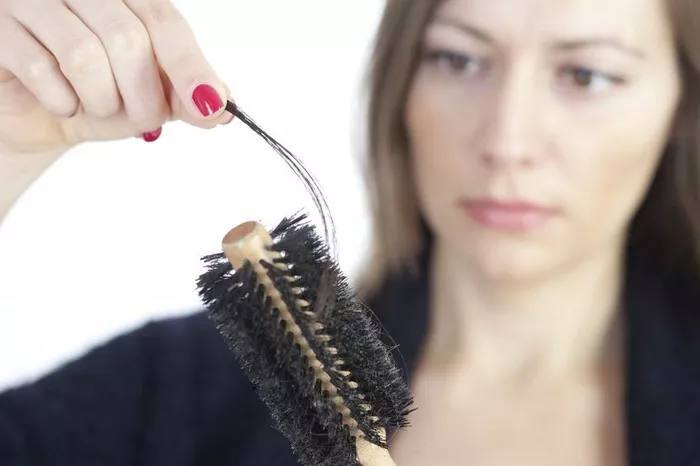In the intricate web of human health, the effects of cancer can be far-reaching, extending beyond the realm of the disease itself. One such impact that often goes unnoticed is hair loss. Yes, you read that correctly – certain types of cancer can indeed lead to hair loss. In this comprehensive article, we delve into the world of oncology to explore the various cancers that can cause hair loss and the mechanisms behind this phenomenon. So, if you or someone you know is grappling with hair loss due to cancer, this article is your guiding light towards a better understanding of the situation.
Understanding the Connection: Cancer and Hair Loss
Understanding the link between cancer and hair loss is pivotal in the context of cancer treatment. While not all types of cancer induce hair loss, it is frequently associated with specific treatments like chemotherapy and radiation therapy. These therapies target rapidly dividing cells, including hair follicles, disrupting their growth cycle. Consequently, patients often experience hair thinning or complete hair loss. Recognizing this connection empowers individuals and healthcare providers to anticipate and address the potential side effect of hair loss during the course of cancer treatment, ultimately aiding in better management and emotional preparedness.
What Is Cancer?
Cancer is a complex and devastating disease characterized by uncontrolled cell growth and division in the body. These abnormal cells, known as cancer cells, can infiltrate and destroy healthy tissues, impairing the normal functioning of organs and systems. The development of cancer often involves genetic mutations that trigger the cells to ignore signals that regulate growth and apoptosis (cell death). Over time, these mutated cells can form tumors, which may be benign (non-cancerous) or malignant (cancerous). Malignant tumors are particularly dangerous as they can invade nearby tissues and metastasize, spreading cancer cells to distant parts of the body through the bloodstream or lymphatic system. Cancer is a leading cause of death worldwide, but ongoing research and advancements in treatments offer hope for improved outcomes and increased survival rates.
Types of Cancer Prone to Hair Loss
Now, let’s delve into the specific types of cancer that are most likely to cause hair loss. Understanding these nuances can assist patients and caregivers in preparing for potential changes in appearance during their cancer journey.
1. Breast Cancer
Breast cancer, affecting both men and women, is frequently associated with hair loss. The treatments, such as chemotherapy and hormone therapy, can trigger hair thinning or complete hair loss.
2. Ovarian Cancer
Ovarian cancer, often diagnosed in later stages, is known for its potential to cause hair loss. The hormonal fluctuations and aggressive treatments involved can contribute to hair thinning.
3. Lymphoma
Both Hodgkin and non-Hodgkin lymphomas can result in hair loss. The cells affected by these types of cancer are fast-growing, making them vulnerable to chemotherapy-induced hair loss.
4. Lung Cancer
Lung cancer, characterized by its aggressive nature, can lead to hair loss as a result of chemotherapy and radiation therapy. Patients may notice hair thinning or complete baldness.
Coping with Cancer-Related Hair Loss
Navigating hair loss during cancer treatment can be emotionally challenging, but there are strategies to cope effectively. Here are some tips for managing this aspect of cancer treatment:
1. Consider Scalp Cooling
Scalp cooling, also known as cold cap therapy, is a method employed to reduce hair loss during chemotherapy. It involves wearing a cold cap before, during, and after treatment to restrict blood flow to hair follicles, minimizing the impact of chemotherapy drugs.
2. Explore Wig Options
Many cancer patients opt for wigs as a practical and confidence-boosting solution. Consult with a wig specialist to find a comfortable and natural-looking wig that suits your style.
3. Embrace Scarves and Headwraps
Scarves and headwraps can be fashionable alternatives to wigs. They not only protect your scalp but also allow you to express your unique sense of style.
4. Seek Support
Joining a support group for cancer patients can provide emotional support and valuable insights from others who have experienced hair loss. Sharing your feelings and experiences can be cathartic.
See Also: Hair Loss & Beta Blockers: What You Need to Know
Conclusion
In conclusion, hair loss during cancer treatment is not uncommon, but it is essential to understand that not all types of cancer lead to this side effect. Chemotherapy and radiation therapy are often the culprits, affecting hair follicles’ growth cycle. However, various coping mechanisms, such as scalp cooling and wig options, can help individuals maintain their self-esteem and confidence throughout their cancer journey. By staying informed and seeking support, those facing cancer-related hair loss can navigate this aspect of their treatment with resilience and grace.


